How to play Hearthstone's Battlegrounds mode
How to get into the beta, and the rules of Hearthstone's autobattler-style mode.
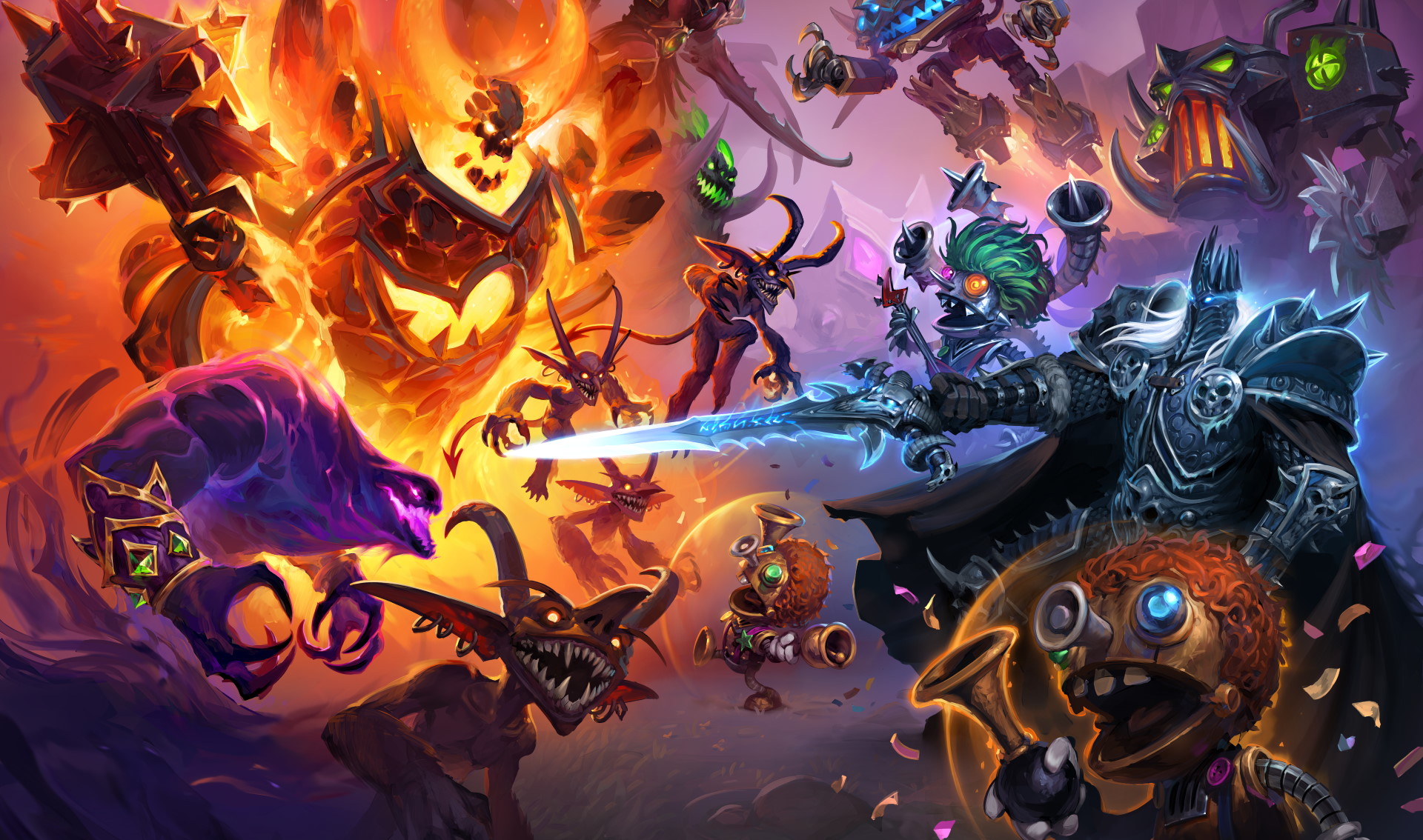
Heathstone's new Battlegrounds mode, which is in early access for Descent of Dragons pre-purchasers now, takes after the autobattler craze started by Dota Auto Chess. All the work is in preparation. The actual fights happen without your input.
I didn't get into any of the Auto Chess spinnoffs, and didn't expect to get into Battlegrounds. But dammit, it hooked me immediately. It's unreasonably satisfying. Something about knowing what's going to happen before it does—a massive resummoning of my minions, maybe—is terribly seductive. And the slow building of power over the course of a game makes me feel like an evil mastermind.
Or a down-on-his-luck peasant. Sometimes, the cards you're dealt just don't cut it. It's also a bit slow in the early rounds, but that hasn't stopped me from wanting to play more.
There's a comprehensive tutorial the first time you launch Battlegrounds, but if you forgot anything or want to know what's going on in streams, here's how it works.
How to get in to the Battlegrounds beta
Right now, the only way to play Battlegrounds is to pre-order the Descent of Dragons expansion. If you attended BlizzCon or bought a Virtual Pass, you also have access. The early access period will last until 12 am PST on November 12. At that point, the open beta begins, and anyone can play.
You can find Battlegrounds by clicking the new 'Modes' button at the main menu.
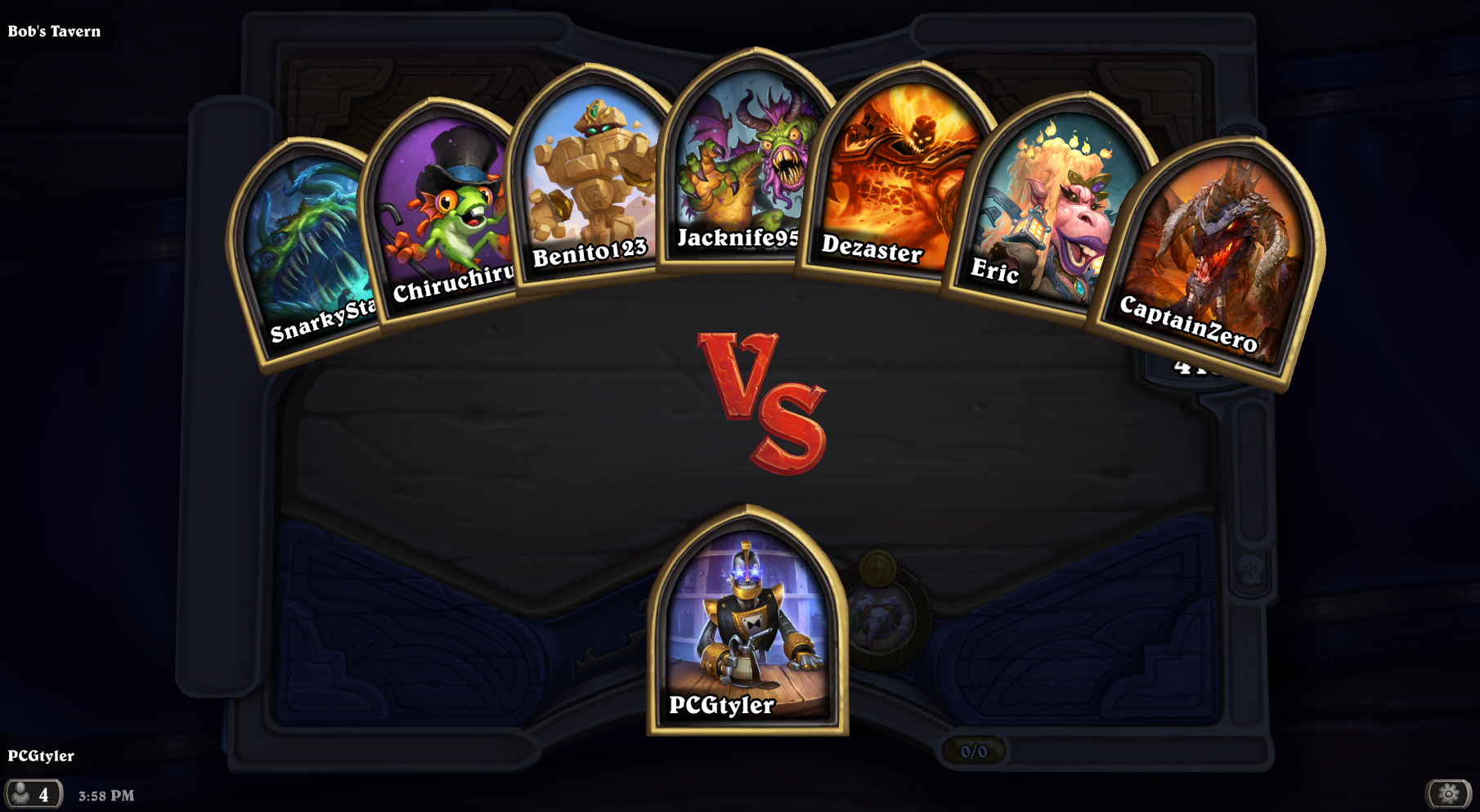
How Battlegrounds is structured
Battlegrounds is a competition between eight players. Like in regular Hearthstone, you're trying to defend your hero while dealing damage to the opposing hero—heroes, in this case. The last hero standing wins.
The biggest gaming news, reviews and hardware deals
Keep up to date with the most important stories and the best deals, as picked by the PC Gamer team.
Games alternate between two phases. First, there's a recruit phase in the Tavern where you can purchase minions, play them, use your hero power, and upgrade the selection of minions. After that, you enter combat with another player. Combat is completely automated. If you're able to clear out their minions, your remaining minions help you damage their hero.
Once combat has resolved, you head back to the Tavern for another buy phase. You don't lose minions who died. The only thing that carries over from combat phases into buy phases is your hero's health.
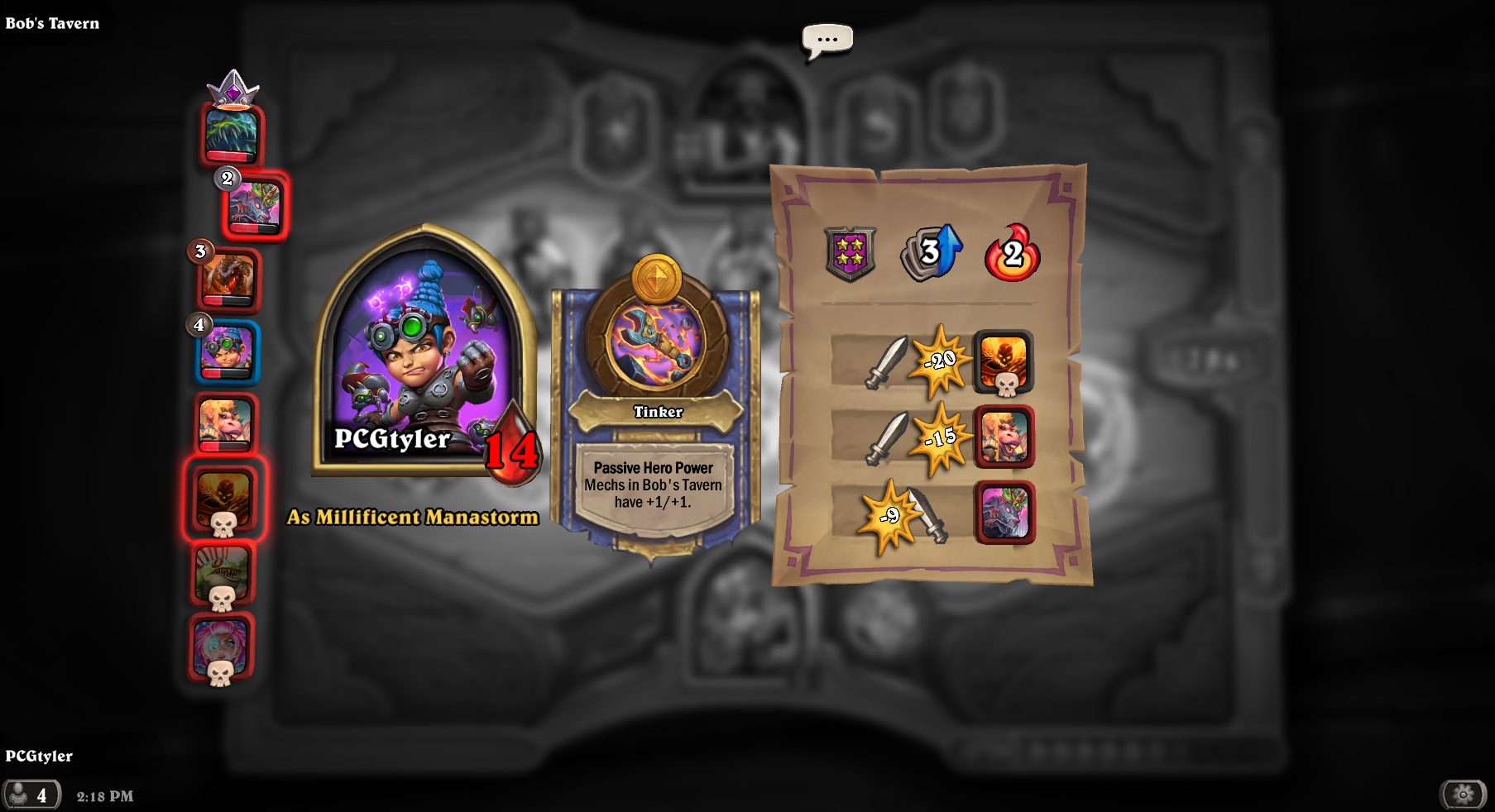
Choosing a hero
Battlegrounds will launch with 24 heroes, but at the start of a match, you only have three to pick from. Your hero power will inform your strategy, so keep it in mind as you plan. So far, I've found that simple permanent buffs are my best bet.
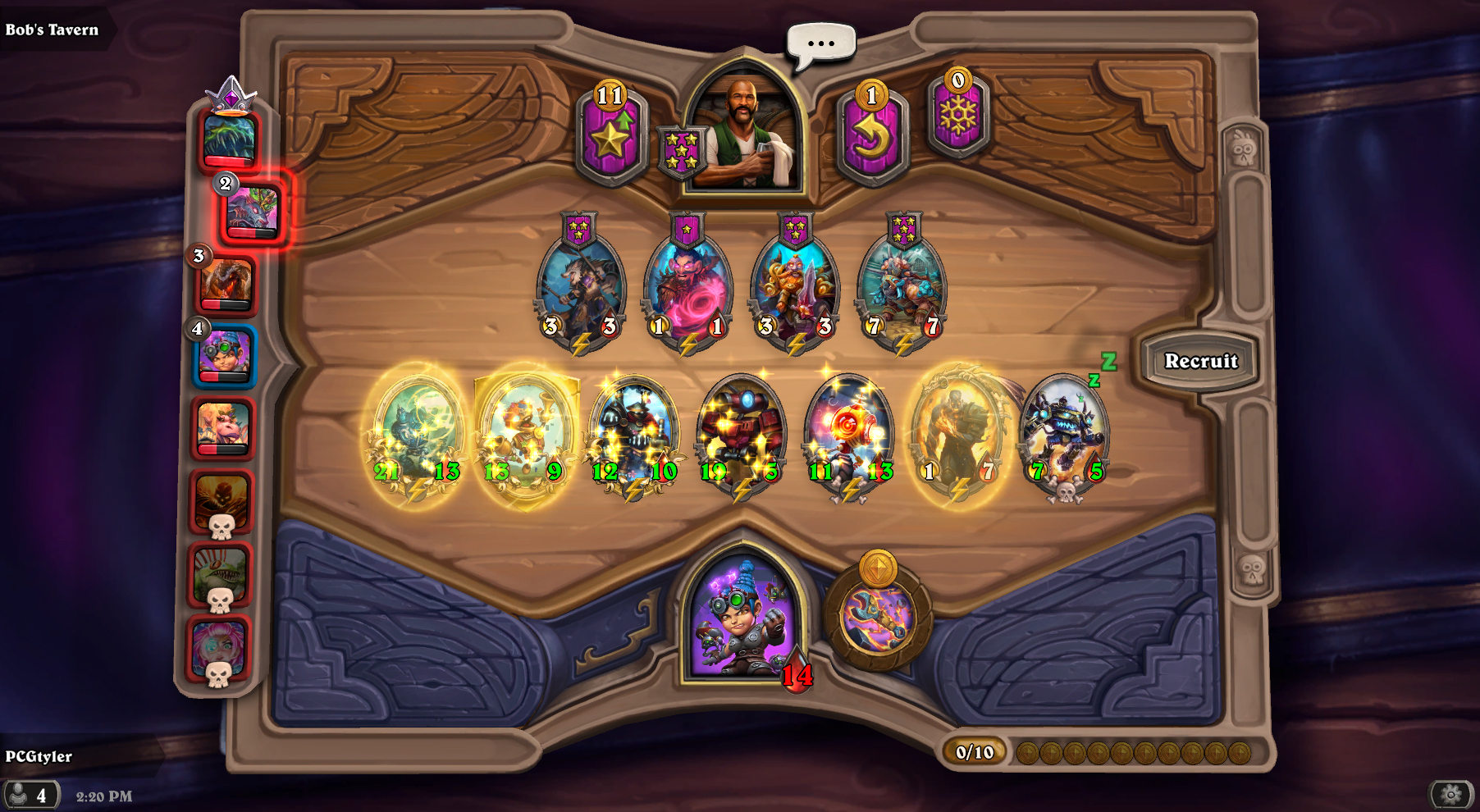
The recruit phase
Rather than mana, your resource in Battlegrounds is gold. You begin with three gold, and get one more gold each round. Gold acts like mana and does not carry over between rounds, so you'll have four gold at the start of the second recruit phrase even if you had gold left over after the first phase. (Which you won't, because there's no reason not to buy a minion during the first phase.)
Minions always cost three gold, no matter how powerful they are. Gold can also be spent to increase the power level of the minions offered in the Tavern, represented by stars. The cost of moving to the next tier decreases each round.
If you recruit three of the same minion, they'll combine into a powerful gold version of that minion and you'll be given a card you can redeem for another free minion from a tier higher than your current level. If you've buffed one of those three minions, those buffs will carry over to the gold card, so tripling is never a bad thing. (That is, unless your strategy rests on having two of those minions in play for some reason. That hasn't been the case for me yet, and you can always find new, non-gold versions of a tripled minion to play.)
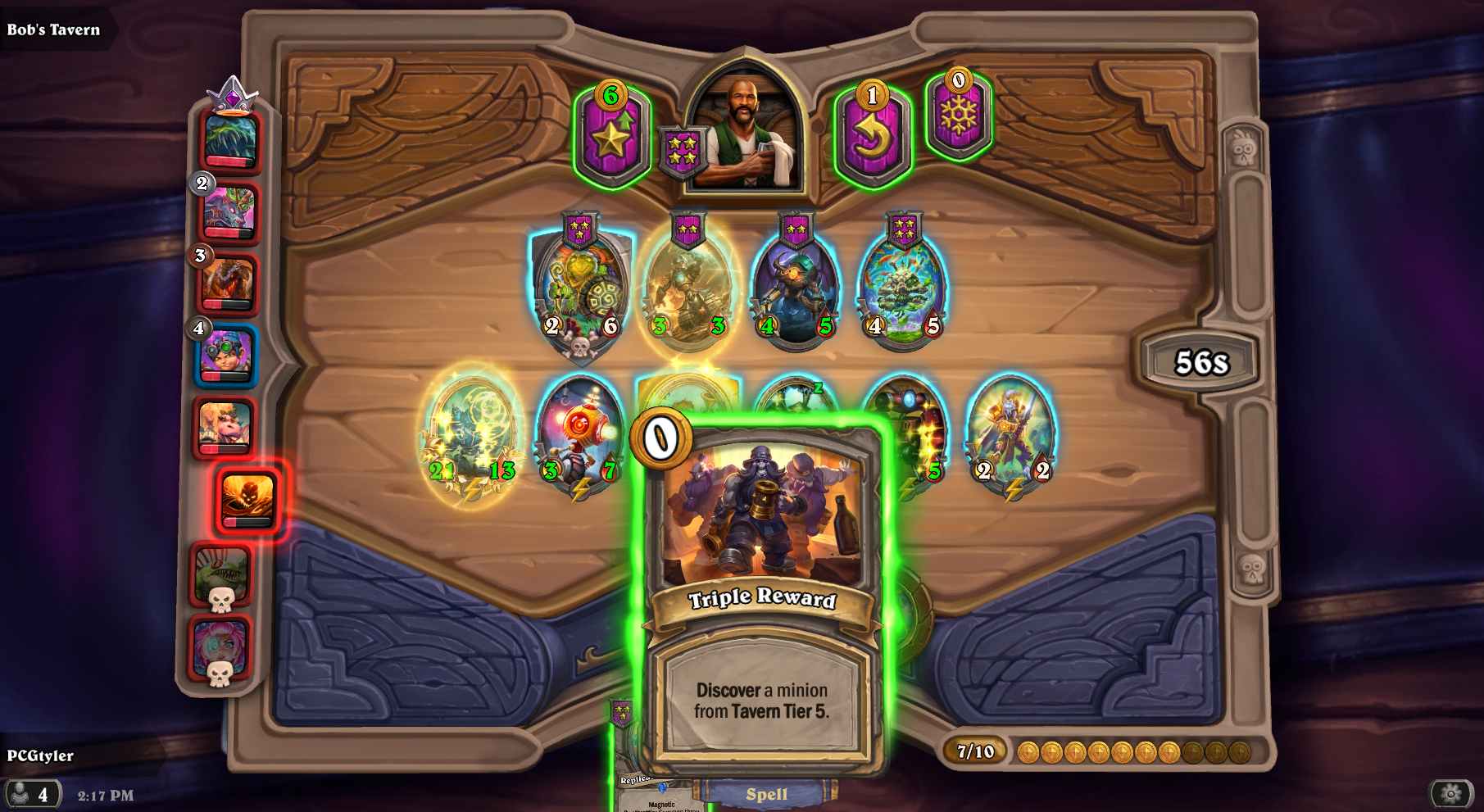
Refreshing the stock of minions available costs one gold, but freezing them in place so they'll be available in the next round costs nothing. If you see a minion you want but can't afford it, smash that freeze button.
You can also use your hero power during this phase, unless it's a passive power, and it'll cost between one and four gold depending on your hero.
Once you've recruited a minion, you can then place it on the board, which doesn't cost anything. A played minion can't be returned to your hand, but you can sell it back for one gold. You can rearrange minions on the board after they've been placed.
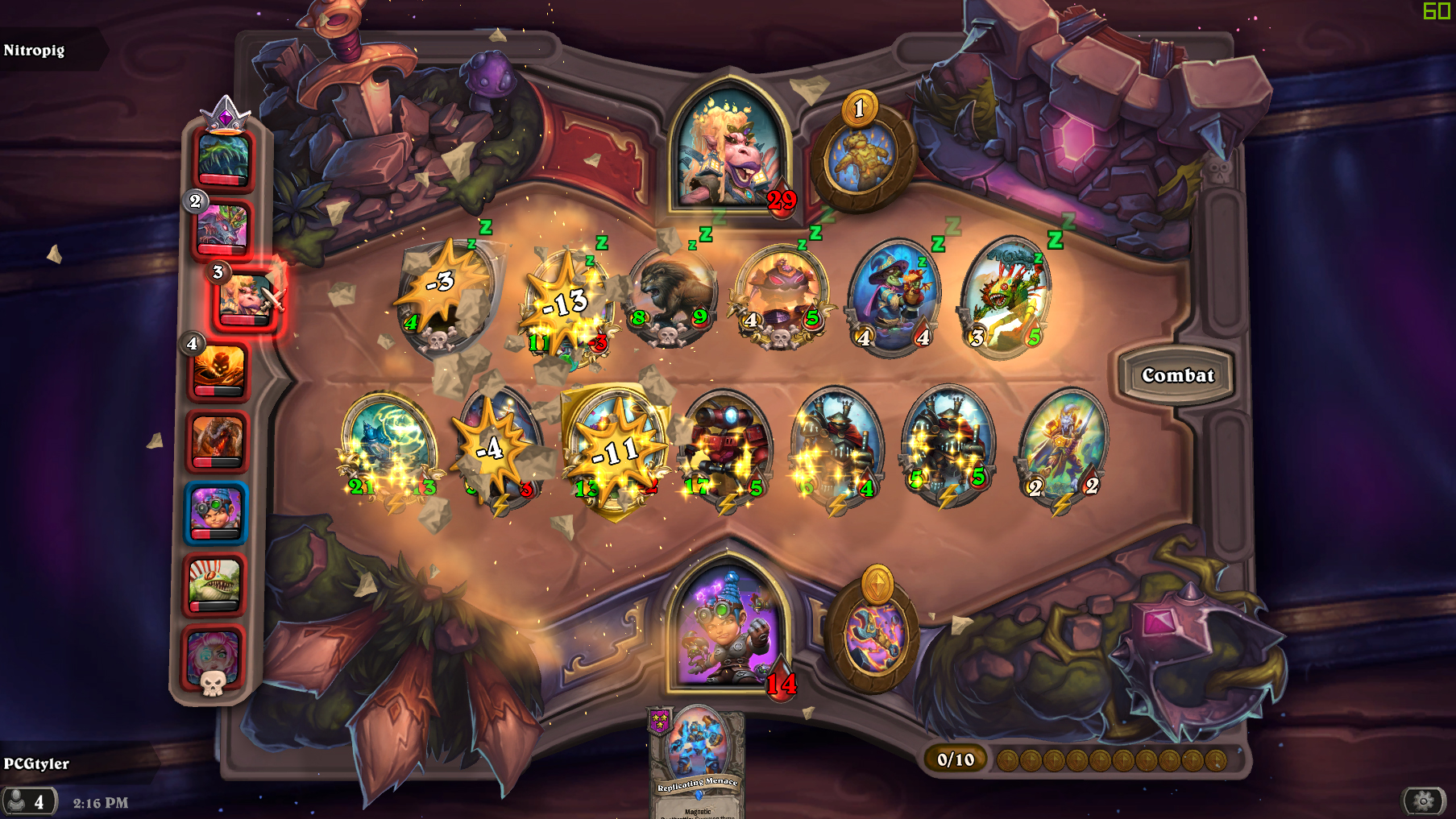
The battle phase
During battles, all you have to do is sit back and watch. Your minions will duke it out with one of the other eight players' minions until they're all dead, or one side has won. When you win, your remaining minions will contribute to your hero's attack number—the higher the minion tier, the more attack it adds—and then your hero gets to take a swipe at the opposing hero. You'll continue to fight every remaining player until one is left standing. (This means that occasionally you'll fight a player that's already dead, if there are an odd number left.)
Minions always attack from left to right, so you can set up strategy where a minion on the left side of the board sets up one on the right by sacrificing itself early to trigger an effect.
After the battle phase, you head back to the Tavern for another Recruit phase.
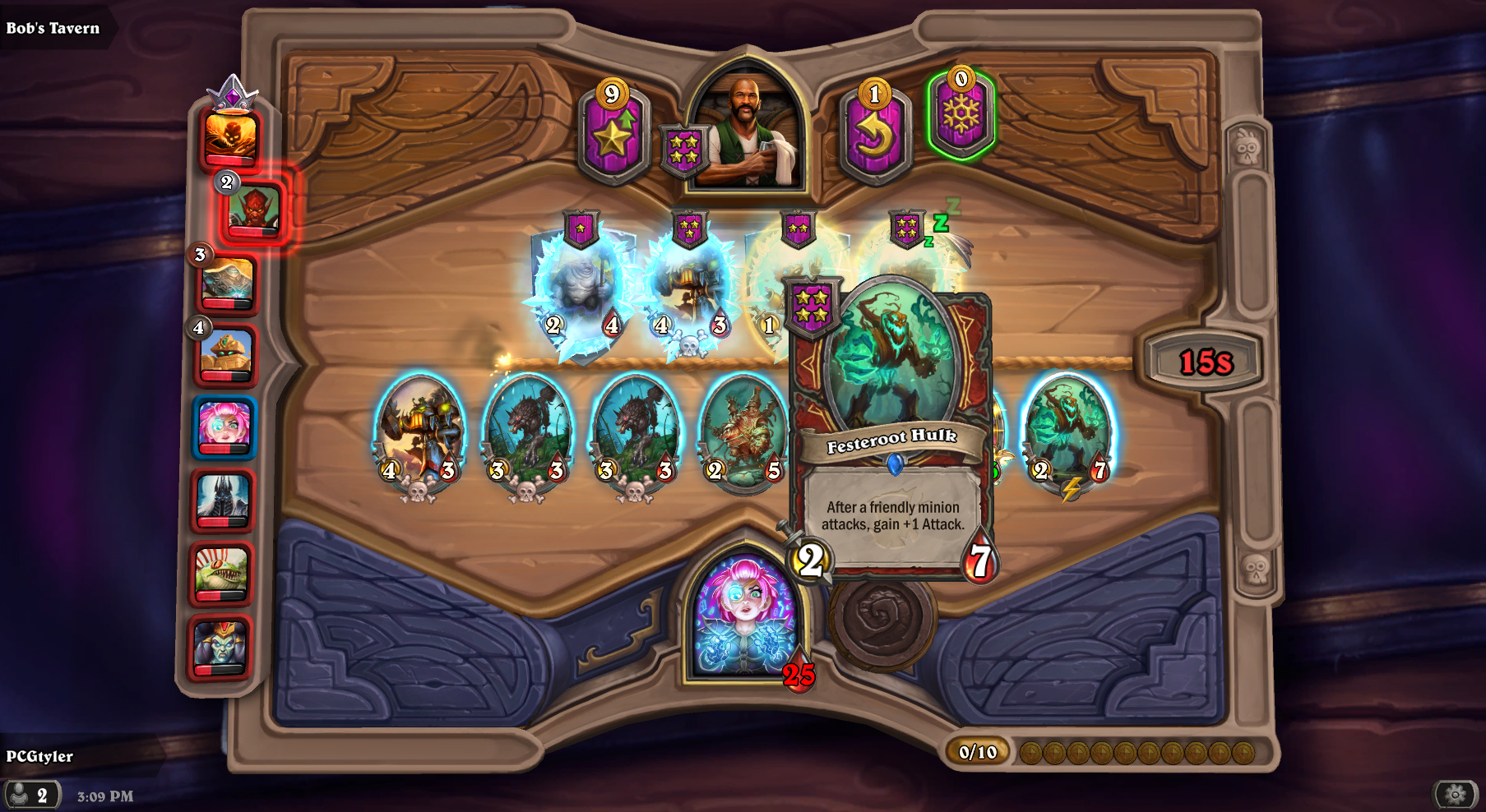
Basic strategy
Winning requires a combination of two tactics. One is to buff your minions to absurd levels. This is possible because, after battles, your minions always return to the state they were in during the last recruit phase. If you use a Battlecry card that increases another card's attack by two, it'll have that buff for the rest of the game. Some cards also have effects that trigger at the beginning and end of a turn, which refers to when you enter the Tavern and when you exit the Tavern. Those are permanent. Near the end of a Battlegrounds game, just about every minion on the board has double digit attack and health numbers.
The second tactic is to set up chain reactions. Each battle phase is a last-minion-standing brawl, and sometimes the other side can be worn down by focusing on summoning and other in-battle effects.
It can be difficult to decide when to sell back a buffed one-star minion to make room for a new five-star minion. Sometimes it's worth doing, but a board full of low-level minions who've been hitting the gym can work, too.
One decision to make early on is which minion types you're going for: Mech, Murloc, Demon, Beast, or a combination, as some powers and cards benefit from variety. What I've found important is knowing when to change plans, ditch one strategy and pick up another. Also pay attention to who you're battling next. If they're at the bottom of the pile, it might be a good round to bump the Tavern tier level up.
We'll have more on Battlegrounds soon. If you're liking it, or not liking it, let us know how you feel in the comments.

Tyler grew up in Silicon Valley during the '80s and '90s, playing games like Zork and Arkanoid on early PCs. He was later captivated by Myst, SimCity, Civilization, Command & Conquer, all the shooters they call "boomer shooters" now, and PS1 classic Bushido Blade (that's right: he had Bleem!). Tyler joined PC Gamer in 2011, and today he's focused on the site's news coverage. His hobbies include amateur boxing and adding to his 1,200-plus hours in Rocket League.

